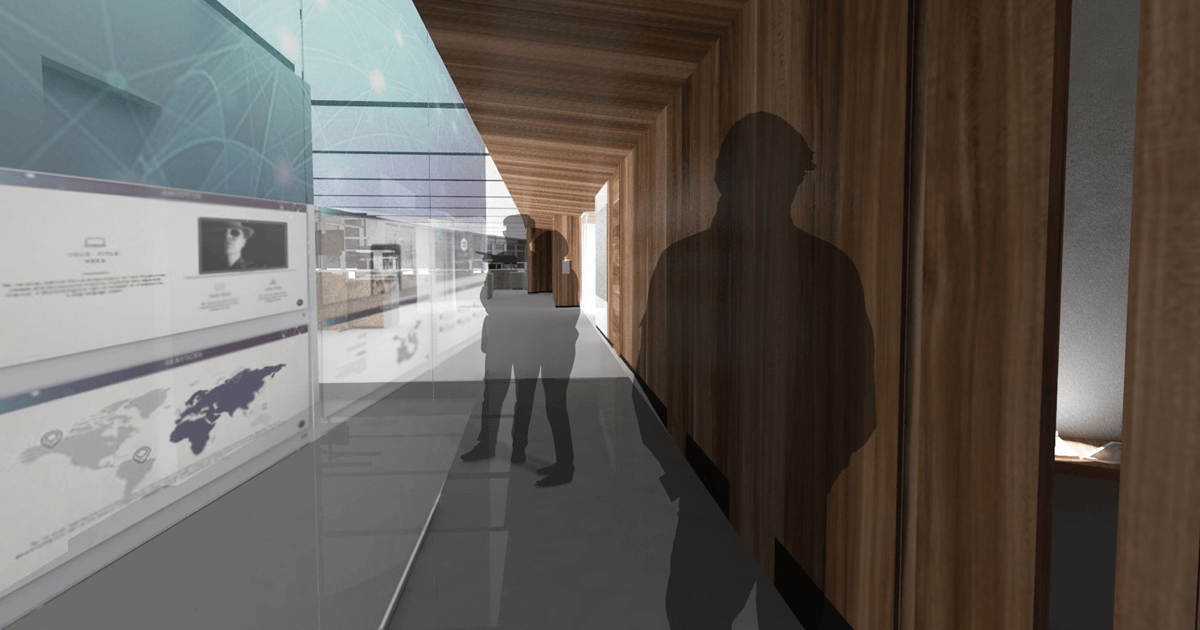
Retail Spaces as Brand Builders
The ease and speed of online buying has made it almost entirely unnecessary to enter a physical store. Yet, consumers still want a relationship with the brands they love. They want to see themselves in these brands and be part of a community. They want this without compromising convenience and personalization. To fulfill these evolving needs and meet their customers wherever they are, be it online or off, brands are looking to create experiences that both express their promise and meaningfully engage their customers and their broader community.
Connection of any kind makes us feel more human and feeds our need for self-expression and belonging. We’re not just talking “Millennial fad” here, but a basic need regardless of age. In a world of increasingly isolated and virtual interactions, consumers of all generations are thirsty for meaningful experiences beyond transaction. And while a retail interaction cannot fulfill these overarching needs in the same way as our more intimate relationships with friends and family, partners or co-workers, these small interactions can build meaningful connections to a brand and its values.
Connecting brand touchpoints
Whether it’s a digital interaction, a traditional brick and mortar store or a temporary brand experience located in a target neighborhood, companies must connect with their customers across multiple touchpoints. Because every experience is an opportunity to reinforce your brand. Every single touchpoint inside and outside a physical location must be intentionally designed and supported to reinforce a consistent brand experience regardless of how, where and when those interactions happen. Beyond convenience and transaction, we must leverage the entire palette of materials—virtual, physical, human—to create places that matter, that support our relationships.
Imagine capturing the smile and the exchange of pleasantries with the local butcher layered with technologies that provide the ultimate in convenience, whether you’re in the shop or planning dinner from the comfort of your own kitchen. Good design meets the customer where they are and creates an emotional connection that brings delight, ease and trust, which in turn builds loyalty and increases engagement.
Data-powered brick and mortar
While intelligence is needed to get those engagements right, it’s not just about tracking customer data anymore. In fact, collecting customer profiles is table-stakes. Rather, brands need to use that knowledge and data to create trust, ease and delight across every touchpoint the customer has with the brand. To do this, brands need to start with intentionality. They must ask themselves: What makes our customers different? What does our brand stand for? And, how can we help meet our customers’ aspirations? Intentionality is the necessary foundation to build a lasting relationship with your customer.
Additionally, customers now expect businesses to understand them as completely as they are understood by any of the apps on their phones. They expect to move seamlessly across channels to complete a purchase or even try something on. Customers don’t think or care about these so-called channels—they only care about getting the products they need and discovering new ones that improve their lives.
Increasingly, customers expect to walk into a store and be able to find the products they want, talk with an expert when needed, and feel like they are truly a part of the brand they love. As with their experience online, they expect a store to recognize them and adapt to their needs. Recognizing your customers as they move through your store and empowering your associates to serve their needs is the initial threshold between our digital and physical worlds. Associates become the cast members of the experience, choreographed with data and personalized advice. But transparency is key in these interactions in order to stay away from the uneasy perception of the creepy stalker salesman.
Technology in service of experience
By leveraging technologies that go beyond data collection and focus on supporting a curated experience, be it a self-service journey or a full immersive brand moment, we’re able to reduce the ever-present friction between online and in-store experiences. At frog, we are creating systems that help our clients support constantly evolving customer interactions, guiding new offerings to meet customer needs and expectations. By designing applications that live in the background of the broader experience, we can redefine a customer’s relationship with your brand. We weave technology through the tissues of the environment to empower great service that is the magic of the experience.
But just in the same way “intelligence” must be considered and designed, technology must also always be used in service of the broader experience—not become the entire experience. Technology is not only the app and backbone behind the scene but can be the platform for sharing the ever-changing narrative that is your relationship with your customer. By using technology as another material on our palette, our architectural practice, Places, can sculpt a theater of experiences that sets the stage for a richer customer relationship. We are designing places that use data to power audio and visual interactions that bring products and services to life. For instance, in our work for a luxury sports car brand, we were able to help the brand share their heritage and expertise through AR experiences that model their mechanics’ surgical precision, feeding the excitement and desire of both current and prospective owners.
Similarly in our retail work with beauty and luxury brands, we are creating fully integrated digital, physical and architectural experiences. Unlike traditional architecture firms and digital consultancies, we are able to design and execute environments that bridge the gap between our physical and virtual lives. It’s not only about adding more monitors and displays into a store but about creating a richer experience through the thoughtful use of technology that enhances the interactions between the physical and digital. We are launching a new experience for a global beauty brand that integrates in-store RFID technologies with the locally accepted mobile application to allow for browsing, testing and purchase of products. At the same time, the design of the store reinvents the brand expression with material, lighting and media. By using theatre and stage design techniques, the tone and atmosphere of the store itself can adapt to a wide variety of functions, events and fashion shows.
Today, we are crafting experiences that merge story, brand, community and interaction together to redefine retail. We are at the precipice of the retail revolution, and intelligent brick and mortar stores will be critical for those who wish to move from transactions to relationships with their customers. Through our multi-disciplinary practice, we’re helping our customers redefine how consumers and brands connect.


Jeff is an architect, designer, producer, director and writer. His work sits squarely at the intersection of story, purpose, and place and together they form a substantive body of deeply emotive and purposeful experiences. Working across sector, scale and medium, he sets experiences in motion that empower people to do their best work, to be their most creative, and to make a lasting impact on society. He has guided organizations, institutions, and non-profits to better understand how purpose-led, sustainable and intentional design helps them re-envision the boundaries of learning, productivity, brand, and community. Jeff has spoken at TEDx, SxSW and many other conferences on design, sustainable and creative communities, the Future of Work and the Future of Learning; and has received numerous awards and distinctions for architecture and design.
We respect your privacy
We use Cookies to improve your experience on our website. They help us to improve site performance, present you relevant advertising and enable you to share content in social media. You may accept all Cookies, or choose to manage them individually. You can change your settings at any time by clicking Cookie Settings available in the footer of every page. For more information related to the Cookies, please visit our Cookie Policy.
Our Studios





